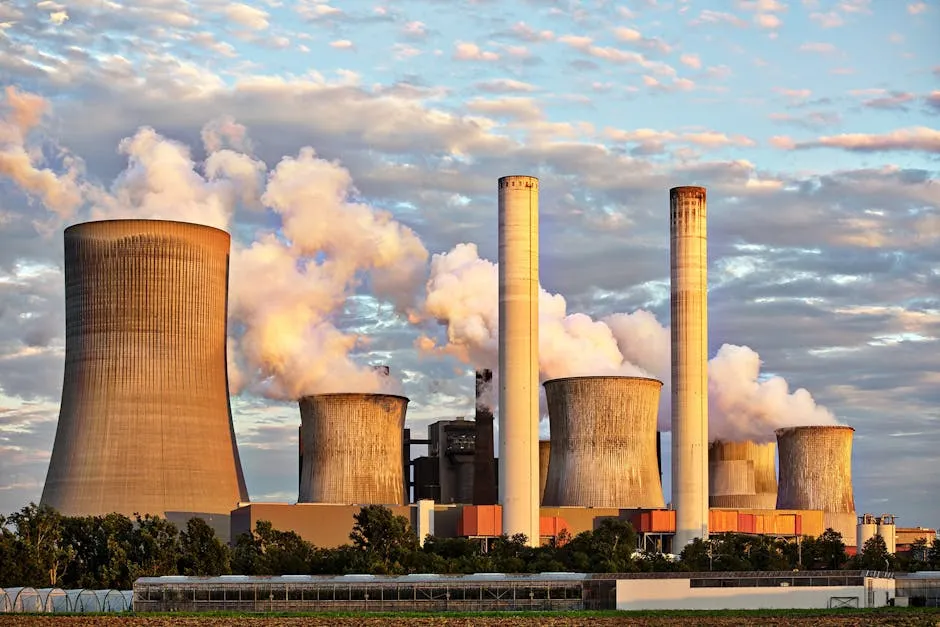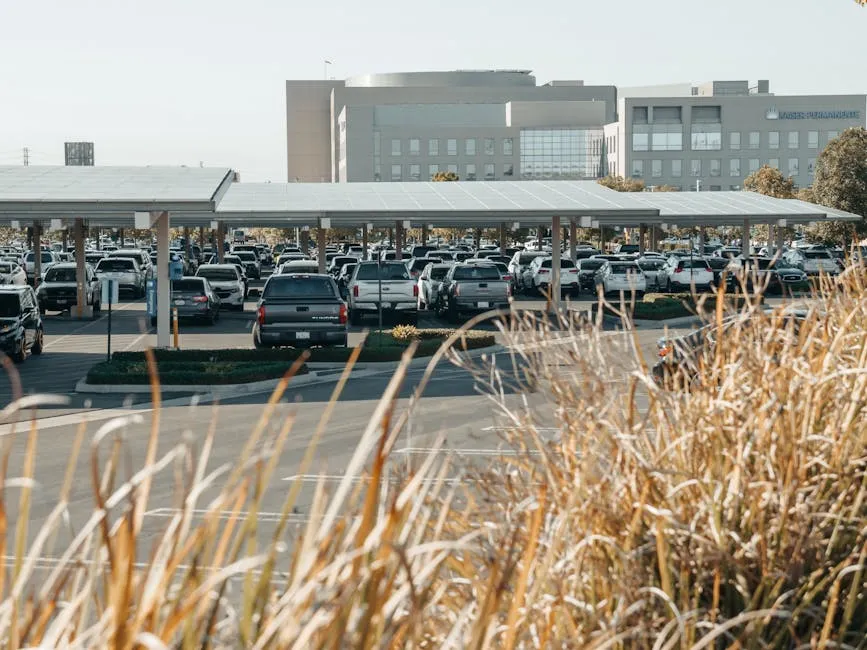Geographic Influence on Pollution Levels
Dorsten, a charming city in Germany, sits snugly in the Ruhr region. This area has a storied industrial past, primarily fueled by coal mining and heavy manufacturing. While that might sound like a recipe for disaster, Dorsten has adapted impressively. The city has transitioned towards renewable energy sources, such as wind and solar power, which has significantly enhanced its air quality. Yes, you heard it right! By embracing cleaner energy, Dorsten has managed to curb pollution levels, making it a greener place to live.
The geographical layout of Dorsten also plays a role. Nestled among lush green spaces and surrounded by rivers, the city benefits from natural air filtration. Trees and vegetation absorb harmful pollutants, providing a fresh breath of air. Residents enjoy a healthier environment, thanks to this natural buffer.

Now, let’s hop over to Fresno, California. This city is located in the heart of the San Joaquin Valley, a sprawling agricultural hub. While the bountiful farms produce delicious fruits and vegetables, they also contribute to Fresno’s pollution woes. The valley’s unique topography creates a basin effect, trapping air pollutants, especially during the hot summer months. This means that pollutants linger longer, creating a thick smog that can be quite unwelcoming.
Fresno’s climate, characterized by high temperatures and limited rainfall, further exacerbates the issue. The combination of vehicle emissions, industrial activities, and agricultural practices leads to elevated levels of ozone and particulate matter. While Dorsten breathes fresh air, Fresno often feels like it’s caught in a smoggy embrace.
If you’re concerned about the air quality in your home, consider investing in an Air Purifier. It can help filter out pollutants and improve indoor air quality, making your living space a healthier environment for you and your family.
The contrast between these two cities is striking. Dorsten’s proactive approach to environmental sustainability has paid off, while Fresno grapples with geographical challenges and pollution from various sources. The road to cleaner air is paved with community engagement, innovative policies, and a commitment to sustainable practices. As we continue this exploration of pollution levels, one thing is clear: geography knows how to throw a curveball!
Key Pollution Metrics
Dorsten vs. Fresno Comparison Chart
| Pollution Indicator | Dorsten, Germany (µg/m³) | Fresno, California (µg/m³) |
|———————|————————–|—————————–|
| PM2.5 | 10 | 25 |
| PM10 | 18 | 45 |
| NO2 | 15 | 30 |
| Ozone | 40 | 70 |
Analysis of the Chart
When comparing the pollution levels in Dorsten and Fresno, the differences are striking. Let’s break down what these numbers mean for the inhabitants of each city.
Starting with PM2.5, Dorsten clocks in at a commendable 10 µg/m³, while Fresno sits at a heftier 25 µg/m³. PM2.5 refers to fine particulate matter that can penetrate deep into the lungs, causing respiratory issues. The high levels in Fresno raise alarms, especially for children and the elderly, who are more vulnerable to these hazards.
Next up is PM10, which includes larger particulate matter. Dorsten’s 18 µg/m³ pales in comparison to Fresno’s 45 µg/m³. This disparity reflects a greater challenge for Fresno, where dust from agricultural activities, vehicle emissions, and wildfires contribute significantly to air quality degradation. The dust isn’t just there for decoration; it poses serious health risks.

Did you know that monitoring your air quality can help you stay informed about pollution levels? Consider getting an Air Quality Monitor. It can give you real-time data about the air you breathe, allowing you to make informed decisions about your health and well-being.
Nitrogen dioxide (NO2) follows suit, with Dorsten recording 15 µg/m³ and Fresno at 30 µg/m³. NO2 primarily comes from vehicle emissions and industrial activities. Higher levels in Fresno mean more respiratory ailments, particularly during the summer months when smog tends to linger.
Finally, let’s chat about ozone levels. Dorsten’s ozone measurement is 40 µg/m³, while Fresno’s is a staggering 70 µg/m³. Ozone is a tricky pollutant; while it protects us from harmful UV rays in the upper atmosphere, ground-level ozone is a different beast. It can cause lung irritation, exacerbate asthma, and lead to other chronic conditions. Fresno’s higher levels are a direct result of its sunny climate and geographical position, which trap pollutants.

What does all this mean? The implications of these metrics are profound. Higher levels of particulate matter and ozone can lead to a plethora of health issues, including asthma, bronchitis, and cardiovascular diseases. This is particularly concerning in Fresno, where pollution impacts are compounded by agricultural practices and topographical challenges. The city often finds itself in a smoggy embrace, while Dorsten enjoys comparatively cleaner air due to its commitment to renewable energy and stringent regulations.
To combat pollution in your own life, consider using Eco-Friendly Cleaning Products. They can reduce harmful chemical emissions in your home while keeping it clean and safe for everyone.
The health risks associated with elevated pollution levels cannot be overstated. Individuals exposed to high levels of particulate matter are at increased risk of developing chronic respiratory issues. Ozone, particularly, can be a sneaky culprit—often underestimated, yet it affects millions every year.

In conclusion, the Dorsten vs. Fresno pollution comparison paints a vivid picture of how geography, regulations, and community actions play a role in air quality. While Dorsten benefits from proactive measures and a shift towards renewable energy sources, Fresno continues to grapple with pollution from various sources, highlighting the need for continued efforts in environmental health. Understanding these metrics is crucial for residents and policymakers alike, as cleaner air not only enhances quality of life but also reduces healthcare costs in the long run.
Challenges and Regulations in Fresno
Fresno, California, is no stranger to environmental regulations. Known for its strict policies, the Golden State aims to tackle pollution head-on. Unfortunately, it faces unique challenges, particularly in agriculture. The San Joaquin Valley, where Fresno resides, is a hotspot for farming. While the region’s agricultural bounty is impressive, it contributes significantly to air pollution.
California has implemented rigorous regulations, such as the California Clean Air Act, which mandates emissions reductions from vehicles and industries. These regulations are crucial for addressing the heavy smog that often blankets the city. However, enforcing these rules is no small feat. Farmers, burdened by the costs of compliance, sometimes struggle to keep pace with the ever-evolving requirements.

Pesticides, fertilizers, and dust from farming operations release harmful pollutants. High temperatures and stagnant air create perfect conditions for ozone formation, which can lead to respiratory issues among the population. The struggle is real! Farmers want to protect their crops and livelihoods, but the methods they employ can backfire, impacting air quality and, by extension, public health.
If you’re planning to get into gardening, consider using an Organic Gardening Kit. It can help you grow your own food sustainably and reduce your carbon footprint while promoting healthier air quality in your community.
Another challenge Fresno faces is its geography. Nestled in a valley, the city is prone to temperature inversions that trap pollutants close to the ground. This phenomenon exacerbates air quality issues, making the air feel heavier and smoggier during summer months. Even the best regulations can struggle to combat the effects of Mother Nature.

Community engagement is vital in navigating these challenges. Local organizations work tirelessly to educate residents about pollution sources and advocate for cleaner practices. Programs promoting carpooling and public transportation help ease traffic congestion and reduce vehicle emissions. Yet, these efforts are only part of the solution.
To make your daily commute a little greener, consider using a Reusable Water Bottle. Staying hydrated while reducing plastic waste is a win-win for both your health and the environment!
To sum up, while Fresno has made strides in addressing pollution through stringent regulations, the ongoing challenges stemming from agriculture and geographic factors remain significant hurdles. Striking a balance between agricultural success and environmental health requires creativity, cooperation, and a commitment to sustainable practices.
Comparative Analysis
When comparing Dorsten and Fresno, the effectiveness of regulations in both cities stands out. Dorsten benefits from strict European Union guidelines, while Fresno navigates California’s robust environmental laws. Both cities are committed to improving air quality, but their approaches differ significantly.
In Dorsten, stringent regulations have led to a notable reduction in air pollutants. The city’s shift to renewable energy sources has been a game-changer. With a focus on public transportation and green initiatives, Dorsten has managed to maintain lower levels of particulate matter and nitrogen dioxide. The combination of strict enforcement and community support has fostered a cleaner environment.

If you’re interested in learning more about renewable energy, check out a great Renewable Energy Book. It can provide you with insights into how energy consumption impacts air quality and what you can do to contribute to a cleaner future.
On the flip side, Fresno’s challenges stem largely from its agricultural backbone. While the state has implemented strong regulations, the enforcement can be uneven. The agricultural sector remains a primary contributor to air pollution. The reliance on traditional farming methods complicates efforts to transition to more sustainable practices. Despite the regulations in place, the scale of pollution from farming, vehicles, and industrial activities often overshadows the positive impacts of these policies.

Moreover, Fresno’s geographical disadvantages further complicate the regulatory landscape. The valley’s topography creates a natural trap for pollutants, making it difficult for clean air to circulate. Even with robust regulations, the city’s unique challenges hinder significant improvements in air quality.
Ultimately, the comparative analysis of regulations in Dorsten and Fresno reveals a stark contrast. Dorsten’s proactive approach has led to cleaner air and healthier residents. Meanwhile, Fresno continues to grapple with complex issues fueled by agriculture and geography. Both cities highlight the importance of community engagement and innovative solutions to combat pollution.
Vulnerable Populations
When it comes to pollution, not everyone is affected equally. In both Dorsten and Fresno, certain demographics bear the brunt of poor air quality. Let’s take a closer look at who is most vulnerable in these two cities.
In Dorsten, children and the elderly are particularly susceptible to the harmful effects of pollution. The city’s air quality, while relatively better compared to Fresno, still poses risks. Children, with their developing lungs, face a heightened risk of respiratory issues. Elderly residents, often battling pre-existing health conditions, are also at a greater disadvantage. These groups may experience more severe symptoms from pollutants like nitrogen dioxide (NO2) and particulate matter (PM), leading to increased hospital visits.

Low-income families in Dorsten are another vulnerable demographic. Many live in areas closer to industrial zones, exposing them to higher pollution levels. These communities often lack access to healthcare resources, making it difficult for them to manage pollution-related health issues. Awareness campaigns focused on these neighborhoods can help mitigate risks and promote healthier living.
Now, let’s shift our focus to Fresno. Here, the story takes a more alarming turn. The city consistently ranks among the most polluted in the U.S., and its vulnerable populations are feeling the impact. Children in Fresno suffer from some of the highest asthma rates in the nation, largely due to high levels of ozone and particulate matter. The combination of agricultural practices, vehicle emissions, and geographical barriers creates a recipe for disaster.
Fresno’s low-income communities are particularly hard hit. Many families live in areas with heavy traffic and industrial activity, exposing them to toxic air. These neighborhoods often lack green spaces, making it harder for residents to escape the pollution. Furthermore, many residents may struggle to afford air purifiers or healthcare, which compounds the problem. The community’s health is at stake, and immediate action is necessary.

Moreover, the elderly population in Fresno faces serious health risks due to air pollution. With many living with chronic conditions such as heart disease, they are particularly vulnerable to the effects of poor air quality. Emergency room visits spike during smoggy days, illustrating the urgent need for cleaner air.
The disparities in vulnerability between Dorsten and Fresno are stark. While both cities have their challenges, Fresno’s situation is exacerbated by higher pollution levels and socioeconomic factors. The need for targeted interventions and community support is clear. Whether it’s improving public transport, implementing stricter regulations, or enhancing healthcare access, addressing the needs of these vulnerable populations is crucial for promoting public health.
Ultimately, recognizing and addressing the unique challenges faced by these groups is vital. By focusing on education, community engagement, and policy changes, both cities can work towards a healthier future. Cleaner air is not just a luxury; it’s a necessity for everyone, especially those who are most vulnerable.
Future Projections
Looking ahead, both Dorsten and Fresno are taking significant strides toward improving their air quality and addressing pollution challenges. Their efforts are distinct, shaped by geography, industry, and community engagement.
In Dorsten, the commitment to sustainability remains strong. The city has embraced renewable energy sources such as wind and solar power, reducing its reliance on fossil fuels. Future projections indicate an increase in these initiatives. Plans for expanding public transportation and enhancing cycling infrastructure are on the horizon. By encouraging residents to adopt greener commuting options, Dorsten aims to further lower vehicle emissions. The local government is also focusing on stricter regulations regarding industrial emissions, ensuring that factories comply with high environmental standards. Dorsten’s proactive approach serves as an inspiring model for other cities grappling with pollution.

On the other hand, Fresno faces a more complex path. With its heavy agricultural base, the city must tackle pollution from farming practices, vehicle emissions, and wildfires. Future projections highlight the necessity for innovative agricultural reforms. By promoting sustainable farming practices, Fresno could minimize pesticide and fertilizer runoff, which currently contributes to air and water pollution. Community awareness campaigns are gaining traction, empowering residents to advocate for cleaner air. Additionally, local organizations are pushing for improved public transportation options to reduce vehicle dependency.
Both cities can also benefit from investing in Compost Bins to reduce organic waste and improve soil quality. Composting is a simple yet effective way to contribute to a healthier environment.

California’s stringent air quality regulations offer Fresno a solid framework for future improvements. However, the city must navigate challenges like older vehicle emissions and seasonal wildfire impacts. Collaborative efforts between local government and community groups will be essential in addressing these issues.
Both cities illustrate the importance of community involvement in pollution reduction efforts. As Dorsten embraces renewable energy and sustainable practices, Fresno works to reform its agricultural sector and enhance public engagement. These future projections offer a glimpse of hope, emphasizing that with dedication and innovation, both cities can achieve cleaner air and healthier environments for their residents. The journey is ongoing, but the commitment to change is clear.
Conclusion
The pollution comparison between Dorsten and Fresno reveals significant differences shaped by geography, industry, and regulatory frameworks. Dorsten enjoys relatively better air quality due to its proactive approach to sustainability and stringent environmental regulations. In contrast, Fresno grapples with persistent pollution challenges stemming from its agricultural roots and geographical factors.

Continued efforts in both cities are crucial for reducing pollution levels and promoting public health. Lessons learned from Dorsten’s commitment to renewable energy and Fresno’s struggles highlight the importance of innovative solutions and community involvement. Engaging residents in pollution reduction initiatives can foster a sense of ownership and responsibility toward their environment.
If you’re looking for ways to incorporate sustainable practices into your daily life, consider investing in Reusable Beeswax Food Wraps. They can help you reduce single-use plastic waste in your kitchen, making your food storage more eco-friendly.
In the fight against pollution, the collaboration between government, communities, and individuals plays a vital role. As both cities strive for improvement, they can learn from each other’s experiences and work together toward a cleaner, healthier future. The road ahead is challenging, but with determination and commitment, Dorsten and Fresno can emerge as leaders in environmental health.
FAQs
Why is ozone a bigger issue in Fresno than in Dorsten?
Fresno’s geographical factors play a significant role in ozone formation. The Central Valley’s unique topography traps pollutants, especially during the hot summer months. This leads to higher ozone levels compared to Dorsten, where a cooler climate and stricter regulations help mitigate this issue.
What role does agriculture play in pollution in Fresno?
Agricultural practices in Fresno significantly impact air and water quality. The use of pesticides and fertilizers contributes to pollutant levels, while dust from farming operations further degrades air quality. Sustainable farming practices are essential to address these challenges.
How do governmental policies differ between Dorsten and Fresno?
Dorsten benefits from robust EU regulations that promote renewable energy and limit industrial emissions. In contrast, Fresno operates under California’s strict environmental laws but faces challenges in enforcement, particularly in the agricultural sector. Both cities must adapt their policies to effectively manage pollution.
What are the long-term health effects of pollution in both cities?
Prolonged exposure to pollution in both cities can lead to chronic health issues. In Dorsten, residents may face respiratory conditions due to industrial emissions. In Fresno, higher asthma rates and cardiovascular diseases are prevalent, particularly among vulnerable populations, highlighting the urgent need for cleaner air.
What can residents do to help improve air quality?
Residents play a crucial role in improving air quality. Simple actions like reducing vehicle usage, participating in local clean-up events, and advocating for greener policies can make a difference. Community involvement is key to fostering a healthier environment for everyone.
Please let us know what you think about our content by leaving a comment down below!
Thank you for reading till here 🙂
For a deeper understanding of the pollution issues in Fresno, you can check out our detailed analysis on fresno crime statistics.
All images from Pexels




